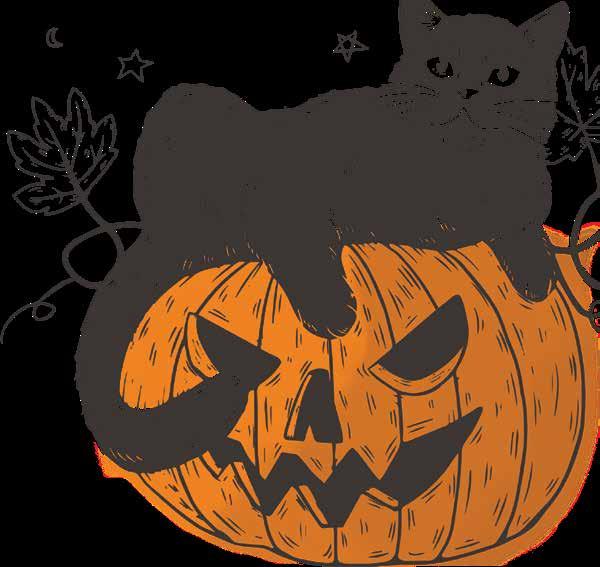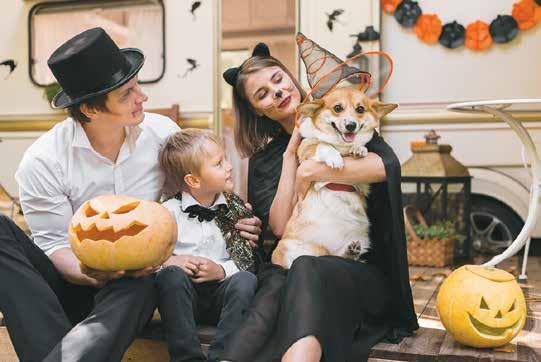
3 minute read
Points on Pets
As the October issue of Old Town Crier goes to press, we all continue to live with COVID-19 and its effects and remain unsure how the pandemic will play out. Halloween will probably still be celebrated by many families this year; others will choose to sit out trick-or-treating in their neighborhoods and focus on celebrating at home. But we all face the same question: How can we help keep our family members (human and animal) healthy and celebrate this holiday safely?
COVID-19 and Your Pets This Halloween
The current consensus among veterinarians and researchers is that humans are far more likely to be infected by SARS-COV-2, the virus that causes COVID-19, than most pets are. It also appears true that the few animals in the United States that have been infected by the virus caught it from humans in close contact. What prevention is most effective? As an August 14 article in Science reported, “Whether it comes to taking your dog to a dog park or petting an outdoor cat, the standard advice still holds: Wear a mask, wash your hands, and social distance.”
The Centers for Disease Control and Prevention (CDC) noted on August 24: • At this time, there is no evidence that animals play a significant role in spreading the virus that causes
COVID-19. • Based on the limited information available to date, the risk of animals spreading COVID-19 to people is considered to be low. • More studies are needed to understand if and how different animals could be affected by COVID-19. • We are still learning about this virus, but it appears that it can spread from people to animals in some situations. • So taking the recommended CDC precautions whether you’re at home or out in public is important. Following public health guidelines and keeping current with research updates should help you keep your humans and pets safe.

Halloween Safety Tips for Pets: The Song Remains the Same
Celebrating Halloween with our pets safely is certainly possible this year. The precautions we routinely take every October 31st to protect our beloved animals still hold, even if we choose to stay home.
Images courtesy freepik.com
Treats and Food
It’s widely reported online that among the most dangerous foods for pets at Halloween are chocolate, candy in general, grapes or raisins, apple seeds, food on sticks (like lollipops and kebabs), alcohol, nuts and seeds (particularly walnuts or macadamias), and any food with wrappers. Sugary, high-fat treats can cause pancreatitis in cats and dogs, an inflammation of the pancreas that is very painful and brings on diarrhea, vomiting, lethargy, abdominal pain, and even kidney failure. Raisins can cause kidney failure in cats and dogs.
Sugar-free foods aren’t safe for pets, either. The artificial sweetener xylitol is in many low-calorie treats, gum, and mints, and it’s toxic to many animals. And sticks and paper or plastic wrappers can block digestive tracts and require a trip to the emergency vet. To keep your pets safe, feed them before trick-or-treating starts, and keep all your Halloween treats stored where they can’t treat themselves!
Decorations and Costumes
Holiday decorations are part of what most of us look forward to seeing on Halloween, but our pets’ reactions to these favorites can be mixed. If you use outdoor or indoor decorations with electrical hookups or open flames or that contain chemicals that could be poisonous, be careful that your pets can’t have ready access to them by jumping, clawing, chewing, or wagging their tails. Many Halloween-related veterinary emergencies involve pets who have choked on decorations they’ve eaten or been burned by candles or electricity.
Tens of millions of Americans dress up their pets for Halloween, and this year will be no different. If you get costumes for your pets, vets suggest that you try dressing them up before October 31st to see how they like their new










